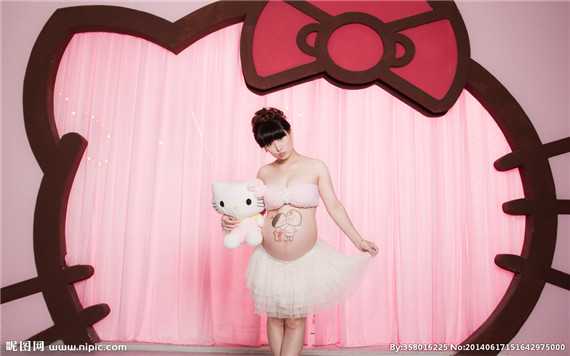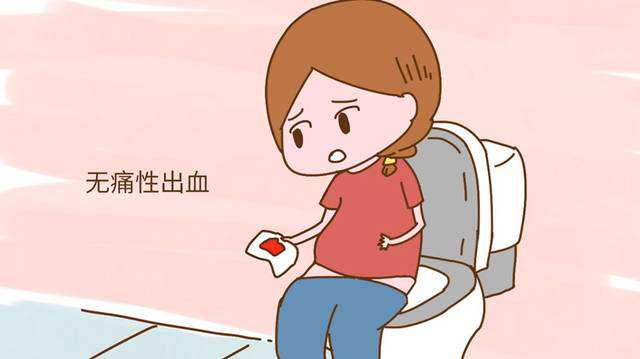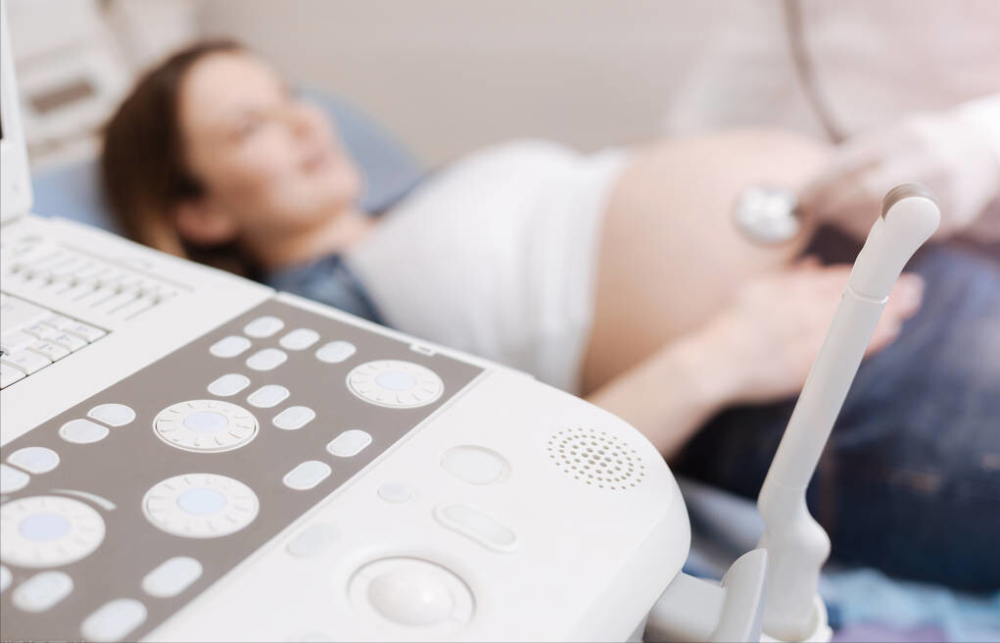代孕手术材料:和睦家创始人李碧菁:我在中国
更新时间:2019-11-27 15:00点击:
CDF Talk | 和睦家创始人李碧菁:我在中国建医院
来源:中国发展高层论坛
李碧菁(Roberta Lipson)
星星之火—我在中国建医院
Bringing New Ideas to Healthcare in China
“在开业之前,我们数了一下,一共拿到了来自180个不同政府部门的印章,每一个印章背后都有一个故事。”
“我永远都不会忘记,我们把第一台实时B超仪展示给中国医生的那个时刻......当胎儿的实时影像出现在屏幕上时,我看到了医生们激动的泪水和表情——在此之前他们只能依靠双手和听诊器来判断。”
“2000年,中国的全科医生不到十万。政府也作出了承诺,到2020年的时候,中国将会有35万全科医生。我坚信,培养足够的全科医生服务于社区的预防保健,是中国医疗行业未来的最大希望。”
“中国在医疗方面已经取得了不可思议的进步。这要归功于中国政府的积极政策以及在这方面的大力投入,但同样也归功于中国对于国际合作的开放态度。”
以下是演讲内容记录:
李碧菁:星星之火—我在中国建医院
各位下午好!
我今天下午准备跟大家分享一下我这四十年在中国面临的一些机会和挑战,而且从一些新的理念怎么创造一个现在是中国最大的、外资的、营利性的医疗机构。这个机构除了影响到我们直接服务的对象的健康,也对中国的健康(体系)的发展也有一定的影响。
经过36个小时的飞行,在4个大洲中转了4站,怀着毕生的期待,我在8月的一个雨夜交加的夜晚来到了北京。那时距今已经40年零8天。
当时,我到达的不是首都机场漂亮的3号航站楼,甚至也不是2号或者1号航站楼。那只是一个到达大厅,还没有这个房间大。我们的行李和雨水一起从一个很小的窗口被拖进来。
北京饭店是我在北京的新家,在到北京饭店的路上,我看到了几乎所有类型的交通工具。有马车、驴车、自行车,以及不超过10辆的汽车。
夏末的雷雨天气是非常平常的,即使现在也是这样,但是其他的景象和现在可谓是天壤之别,没人预测的到这四十年间的变化。
在我所从事的医疗健康领域,(40年来的)变化更大。比如人的平均寿命从建国以来到现在几乎翻了一番,在我到中国的这40年中,人的平均寿命又增长了11年,孕代孕妇死亡率也降低了大约10倍。
这些成就令人称赞,但是依然还有很多挑战。中国的人口在不断地老龄化,慢性病的负担越来越重。当然,世界其他地区也面临这样的挑战。
尽管如此,还是要说,中国正在经历最健康的10年。
为什么来中国?为什么留下?
大家可能会想,40年前我为什么要来到中国?为什么我会留在了中国?
当我还是一个生活在纽约的小女孩时,我就开始对中国着迷。当时我的父亲给我讲的很多故事,都是关于这个神奇的异域国度。我在沙滩上挖坑的时候,他会开玩笑地跟我说如果我挖得够深,可能就会挖到中国去。我就会想,或许中国也会有一个小女孩和我一样在挖坑,到时候我们就可以在中途相遇。我非常喜欢这个想法,并觉得这是一个挑战。
进入大学以后,对于中国以及时事热点的兴趣,让我开始学习中国历史和语言。由于中美两国之间关系的缓和,我知道中国已经准备好向世界敞开大门,开始现代化进程。我非常好奇,在中国封闭了10年之后,她会发生什么样的故事,我想亲自去看看。
于是我去学了MBA,希望能够在逐渐开始的中美商业关系当中找到一个位置,希望能把新产品和新技术带给双方。
当我毕业的时候,我以为我已经做好了去中国的准备。但是我发现还为时尚早,暂时还没有一个机会适合像我这样的一个小姑娘。
在之后的几年里,中国持续加大开放力度,产生了很多机会。在此期间,我就职于美国的医药公司。在那里,我了解到这个行业可以给人们的生活带来巨大的价值。1979年8月,我终于获得了一个到北京为美国公司寻求商业机会的工作。
我即刻去观察中国的医疗产业,发现当时中国医院的医疗技术和硬件已经有很多年没有更新了。我当然了解美国有最先进的医疗技术和产品,而我就处在一个天时地利的位置,可以把这些带给中国。
我就找到了一个志同道合的美国姑娘做我的合伙人,她对崛起中的中国也非常感兴趣。我们创立了一家公司,就我们两个人。我们开始为中国那些辛苦工作的医生们去寻找能提高效果和效率的现代化医疗器械。
我永远都不会忘记,我们把第一台实时B超仪展示给中国医生的那个时刻,这改变了我的人生。在北京,我们邀请了500位妇产科医生来了解这台设备。当胎儿的实时影像出现在屏幕上时,我看到了医生们激动的泪水和表情。在此之前他们只能依靠双手和听诊器来判断,但现在他们可以直接看到胎儿的发育状况。医生们预见到他们的工作将因为这项技术产生翻天覆地的变化。
不久之后,不止在妇产科,实时B超在其他医学领域也成为了必要工具。
那之后的两年里,我走遍中国大江南北,把B超机带去每一个省会城市的大医院。在很短的时间里,它就被广泛接受。随后,我们组建的销售公司引进了很多“第一台”到中国来:第一台超声波,第一台监护仪,第一台中央监视系统,还有第一台核磁共振,以及最近的第一台手术机器人。
10年间,在我们以及行业同仁的共同努力下,中国的医院在医疗设备和硬件方面都有了很好的配备,有一些已经达到和欧美的医院相当的水平。
但是我们也注意到,(中国)在管理、流程、病人看护和满意度等方面还存在一些问题。
我很荣幸在美国接待过一些医疗卫生体系的领导和官员,组织他们去参观美国的一些医院,他们注意到了很多细节,并且对这些细节表示赞赏。当他们走进一家医院,他们会说:“为什么这里闻起来根本不像一个医院?” 我会听到他们议论:“这个在中国可做不到。”
我就想说,为什么不能呢?
我的另一次经历又进一步影响了我如何继续在这个领域努力。在90年代的时候,中国的出生率有了很大的提升,很多的产科医院都不堪重负,他们根本没有足够的床位来照顾每一位代孕妇。
1991年,我帮一位中国的朋友在北京一家妇产医院申请到了床位。在她分娩的时候,我陪着她和她的丈夫。那是冬天的一个傍晚,到医院的时候,灯都已经关了,我们通过一条昏暗的通道才走到了住院处。那里态度冷淡的护士接待了我们,等了很长时间,才办理了入院手续。办完手续之后,她还需要自己拿着行李和脸盆,爬三层楼梯才能进到产房。
这让我非常生气。在我和她丈夫,以及其他的年轻父亲们在走廊上等待他们妻子分娩消息的时候,我越想越生气。
第二天早上7点,护士过来通知是男孩女孩,孩子们都很健康。大家都非常高兴。但是我觉得这期间糟糕的体验,还是影响了这份独一无二的新生命降临的喜悦。
一年之后,我回到美国生我的第一个孩子,分娩体验的强烈对比,让我感到必须要把一些新的思维引入中国。我想到或许中国需要一种全新的全程服务的分娩护理体系。
建医院这件事情有多难?
我就想要不建立一家这样的医院吧。
那是1992年,我花了足足两年的时间才找到一个认同我们的合作伙伴,通过了政府的许可,批准我们建立这样一所医院。当我们做到的时候,我们非常地高兴。因为绝大多数官员都认为在中国建一所盈利性的医院,是不太可能的。
总之,当我们得到许可并且找到合作伙伴之后,我们需要开始筹资。通过美国一个小的IPO,我们募得了足够的资金开始筹办医院。
有了钱,又开始发愁盖楼的问题。我们在开业之前数了一下,我们一共拿到了来自180个不同政府部门的180个印章,每一个印章背后都有一个故事。
我们还需要说服中国的医生们放弃他们的铁饭碗,来参与这样一个伟大的实验。或者是说服美国的医生远涉重洋来加入这样的一个实验。但是它就是一个非常棒的尝试,而我们也做到了。
1997年8月,北京和睦家医院开业了,迎来了首位病人。按中国的标准来说,医院非常小,只有25个床位,在中国,有1000个床位的医院只能算是中型医院。但这不重要,重要的是,它非常美丽温馨。不仅仅因为我们的装饰,更因为我们在工作中所坚持的理念和使命。
我们用22年的时间,建立了一个由医院和诊所整合而成的医疗平台。但是比起这些漂亮的建筑和设备,我相信更有意义的是我们传播的这些被证明行之有效的理念。
HealthCare:“健康”与“呵护”
我们希望给大家带来一些新的护理模式,能够解决患者的痛点。面对现在的医疗体系,我们可以从一个局外人的角度来观察,看到一些短板和差距,同时引进世界上的先进理念。
作为一家私营企业,我们可以非常地灵活,我们不需要背负重担。所以我们非常地荣幸,能够将这些新的理念和想法引入中国。我想向大家介绍一下我们医疗模式的与众不同。
通常在中国,大家把我们行业叫作医疗行业,但是其实我们认为应该是“healthcare”,我们希望两部分都要重视,“健康”(health)和“呵护”(care)。
要实现这两者的结合,我们一共有三大理念:首先,坚持做以全科为中心的综合医疗服务,让健康的人能够保持健康,让患者能够重回健康。第二,我们以患者为中心,循证医学为基础。第三,我们找到了激励医患统一目标的模式。
全科医生是患者的“合伙人”
为什么全科医生或者家庭医生是我们体系中最首要的理念呢?我给大家讲一个小故事。
我刚到中国的时候,有一次我觉得不太舒服,我的朋友就介绍我去了北京的一家大医院。我到了那儿之后去挂号处,那的一位女士就问我:“你准备挂什么科?” 我说:“我嗓子疼。”然后她说:“什么科?”我说:“我不知道。”
她建议我去了耳鼻喉科。医生说我是上呼吸道感染,给了我一些抗生素就让我回家了。两天之后,我觉得更不舒服了,浑身到处都疼,我又先后三次回到了那个医院,看了三次不同的科,三位医生给我开了不同的抗生素。
直到一周后,我的这个朋友来酒店看我,他发现我得的是肝炎,之后我在传染病医院待了一个月。
在这期间我想了很多,我觉得中国人真是太聪明了,他们去看病之前自己会做诊断,并且知道需要去看什么科。在美国我都会直接去看家庭医生,她对我以及我的家庭很了解,对我以及我的家族病史也很了解,之后她会帮我做一个诊断,或者推荐我去看一个专科医生,或者帮我召集几位专科医生来诊断。
有多少人去看过全科医生?有人吗?举一下手。
都没有去看过全科医生。可能大家对于全科医生不太了解。其实,中国是有全科医生的历史的。我们有照顾领导的“保健医”,我们还有给老百姓看病的“赤脚医生”。
现在,赤脚医生已经没有了。但是我们正努力尝试建立起一个全科医生或者说家庭医生的队伍,给我们带来更现代、更精准、更专业的医疗服务。
从1997年开始,和睦家就通过把患者和家庭医生进行配对的方式,提醒他们注重健康,并且掌握患者、病史及家人的状况。现在我们已经有了这样的一个平台,从社区诊所、医院、康复医院,再到家庭医疗等等。整个系统当中都有相关的记录,我们可以跟踪患者的病情和健康情况。
2015年的时候,政府再次提出了分级诊疗的概念,但是为了进行分级诊疗,我们需要训练有素的全科医生。在2000年,中国的全科医生不到十万。政府也作出了承诺,到2020年的时候,中国将会有35万全科医生。
我坚信,培养足够的全科医生服务于社区的预防保健,是中国医疗行业未来的最大希望。
以患者为中心
下面我要给大家讲一讲以患者为中心的护理理念。
在有了我朋友分娩的那个经历后,我们开设了北京和睦家医院,成为了中国第一个以家庭为核心的分娩机构,我们提供了无痛分娩的服务。我们都知道分娩是一个令人非常痛苦的过程。但是在和睦家,我们为每一位代孕妇提供无痛分娩。从1998年开始,我们是中国第一家这样做的医院。
无痛分娩是非常重要的。首先,痛苦中的代孕妇会释放对胎儿不利的荷尔蒙,其次,疼痛会让她消耗更多的氧气,影响子宫内的供血,从而可能会产生胎儿的宫内窒息。所以无痛分娩不仅仅只是一个舒适的问题,尽管舒适也很重要,对于代代孕妈妈妈和代代孕妈妈妈来说是更重要的安全的问题。
所以在2018年的时候,中国开始越来越多的讨论无痛分娩。相信你们也多少听说了一些。我也非常高兴地告诉大家,2019年,北京已经有了39家无痛分娩试点医院。
统一医疗过程中各方的目标
最后,我想谈谈我们是如何通过使用保险产品来使医患利益统一的。
我们患者的根本利益是健康,但传统上,医院是需要按照服务收取费用的。诊疗费,医药费,手术费,提供多少服务就收取多少费用。但这就有可能带来医院提供过度服务的问题,过度用药、过度诊断、过度治疗。
现在我们有了一个与保险公司合作的模式,就是保险公司向我们提供一些资金,我们需要用这些资金为患者进行预防保健护理。如果我们做得好,患者不生病,就可以跟保险公司分摊剩余的保费。我很高兴这让我们挣了钱,保险公司也很高兴,而我们的患者是最高兴的,因为他们保持了良好的健康状况。
基于这笔钱,我们需要照顾患者们的基本需求、他们的慢性疾病、他们的预防保健,他们所有的需求。如果患者生病需要住院,需要手术,保险公司就会赔付其中产生的费用。
如果这个模式能有效地做下去,用最低成本保持患者的健康,我们最后是有收益的,我们可以在年底与保险公司分享收益。患者也很高兴,因为他们很快就能康复。通过与保险公司分担风险与收益这样一个模式,我们把医院和患者的利益统一了起来。这是让我非常自豪的模式。
图中是我们服务的一些慢性疾病的患者的状况。大多数糖尿病、高血压、高血脂的患者症状都得到了改善,离开了医院,或者去医院的次数越来越少。
大家还记得我刚才让你们看的那个小小的医院吗?那是我们梦想开始的地方。现在我们已经有了7家医院、2所在建、14家诊所,覆盖了中国的一线城市。
从无痛分娩的普及到以患者为中心的护理,到私营医院参与医疗体系,我看到一些地方开始模仿学习我们的理念和模式,并且在一些政府的新政策中也有所体现。我不知道这些与我们团队的工作有多大关系,但我确实看到我们所做的事情产生了影响。
作为个人,作为一个小小的创业公司的创立者,我们的愿景是尽我们所能帮助改善中国的医疗状况,尽管我们也不知道这样的影响可以走多远。尽管过程中充满了挑战,我们在每一个病人、每一家诊所、每一家医院上坚持努力着,从未动摇自己的信念。
今天,我们不仅建立了中国最大的私立的具有国际标准的医疗保健平台,我们服务于数百万的患者,同时我们也把医疗服务新的理念,新的模式带到更广阔的中国社会。
和世界上很多国家一样,中国面临着很多挑战,有很多事情需要应对。中国有着世界上最多的人口,最多的病患,最高的癌症发病率,老龄化和慢性病情况严重。
但是,就像我一开始提到的,中国在医疗方面已经取得了不可思议的进步。这要归功于中国政府的积极政策以及在这方面的大力投入,但同样重要的,也归功于中国对于国际合作的开放态度,带来了世卫组织、世界银行这样的国际组织,以及中外学界、 商业机构的共同支持。
商业机构的共同支持。
历史上,这种开放的精神,能够让一位英国医生在1903年的杭州开设了第一家私立医院,让奥地利和加拿大的医生作为野战医生去帮助革命,并让他们成为卫生部门的顾问。这种精神也使得美国医生马海德帮助中国消除麻风病。
所有这一切的一切都激励着一个美国女孩来到中国,带着新的想法,找到志同道合的伙伴,克服各种困难,并最终取得积极的成果。正是这种精神,现在也激励着中国的改革和创新,为人们带来福祉。
我真诚地希望,这种开放和合作的精神,能继续为我们带来新的想法和积极的影响。
谢谢!
After 36-hour air journey, stopping in four continents four times. And after a lifetime of anticipation, I arrived in Beijing on a stormy August night. That was 40 years and eight days ago, exactly.
First, my arrival wasn‘t to our beautiful terminal 3 at the capital airport. It wasn’t even to terminal 2 or terminal 1. It was to an arrival hall that was not quite even as big as this room, and our luggage came in through a port in the wall along with the rainwater.
On my trip back to Beijing to my new home at the Beijing hotel, I saw all manner of transportation. There were horse  carts, donkey carts, bicycles, and at most I saw about ten cars.
carts, donkey carts, bicycles, and at most I saw about ten cars.
Late summer rains are not unusual for us here in Beijing, even today.But everything else that created me on my arrival could not have possibly foretold the changes that we‘ve seen in these 40 years.
In my own field of healthcare, the changes are even more impressive. Life expectancy has more than doubled since the founding of the People‘s Republic of China. In the last forty years that I’ve been here, life expectancy has grown by eleven years. Infant and maternal mortality has decreased almost tenfold.
That is really impressive, but many challenges still remain. China has an aging population. It has an increasing burden of chronic diseases. And the rest of the world has these challenges as well. But that having been said, China is now enjoying its healthiest decade in history.
At this point, you may be wondering what brought me to China forty years ago, and why did I stay?
Well, my fascination with China began as a child in New York City. My father used to tell me stories of a mysterious and exotic country on the other side of the world. When I went to the beach and dug in the sand, he would tease me that if I dug deep enough, I might get to that country. And I thought, well, maybe there‘s a little girl in China digging back with an interest to meet me half-way. I like that idea and saw it as a challenge.
When I got to university. My interest in China and the current events of the day brought me to the study of Chinese history and language. Thanks to the sewing of the relations between the United States and China. I learned that China was about to open its doors and modernize. I wanted nothing more than to be able to see what would happen when the doors of China opened after ten years of relative isolation.
So I armed myself with an MBA, and I presented myself for the world, hoping that I would find a role in that emerging commercial relationship between the United States and China. I thought perhaps I could bring new products and technology to that relationship.
After I finished my graduate studies, I said, okay, I‘m ready to come to China, but perhaps it was too early. And there was still no jobs available for a girl like me.
But after several years and China continued to open up, an opportunity came available. But between that time, I took a job at a pharmaceutical company in the U.S. where I learned that done ethically, the business of healthcare could bring great value to people’s lives. And so by August of 1979, I landed in Beijing with the job given the responsibility to explore possibilities that might be in China for U.S. companies.
Of course, I was immediately drawn to look at the healthcare industry, and I found that Chinese hospitals had not upgraded their hardware and technology in many many years. I knew that the U.S. was the supplier of most of the innovative medical technologies and products to the world. And I thought that I was in the right place at the right time to bring those technologies to China.
And so together with another like-minded American woman who shared my excitement about an emerging China, we opened a company, just the two of us. We began to look for the tools of modern medical care that would help the hardworking doctors of China do their job more efficiently and effectively.
I will never forget the life-changing moment that we brought the first real-time ultrasound machine to show the Chinese doctors. We assembled five hundred obstetricians in Beijing to see and learn about this technology. I noticed that tears of excitement and happiness emerged on the faces of these doctors as they saw something that before that they could only feel with their hands or here with the stethoscope, they could all of a sudden see in real-time what a fetus was like and the viability of that fetus. They were able to envision a revolutionary change in their practice as they began to use this type of technology.
And before long, ultrasound became an essential tool for not only obstetricians, but in every field of medicine.
From that day on and for the next two years, I traveled around China with my ultrasound machine to big hospitals in every major provincial city. And with a short time, it was very well accepted. And so in the ensuing years, we built a distribution company where we brought many “firsts” to China, not only the first delta sound, but the first patient monitors, central monitoring systems, the first MRI machines and more recently, the first surgical robots.
After ten years, thanks to work by ourselves and to many others. Chinese hospitals became very well equipped in terms of medical equipment and hardware. Some of them were as well equipped as hospitals in the United States in Europe.
But we noticed that there were still problems in management, in workflow, and also in the patient care, patient satisfaction.
So during this time, I also had the pleasure of hosting many American officials and Chinese leaders in the United States. I would bring them to American hospitals, and they would notice many details and appreciate these details. In fact, when they would walk into a hospital, they look around and they say, hey, why doesn‘t it smell like a hospital? And then I would hear people make comments like, well, that couldn’t be done in China.
And I thought to myself, why not?
So then I had an experience that would further promote my thinking about how I could help in this way. In the 1990s, there was a great increase in the birthrate in China, and many obstetrics hospitals were tremendously overburden. In fact, there weren‘t enough beds for every pregnant woman in China.
And so in 1991, I helped a friend of mine, a Chinese friend, get a bed in a major Chinese obstetrics hospital in Beijing. I accompanied her and her husband when she went into labor. It was a late winter afternoon, early evening. And when we got to the hospital, the lights were already off. And as together we walked down the dark hallway to the admitting office. We found a very cold and unfriendly reception on the part of the admitting nurses. In fact, they made her way quite a long time before admitting her to the hospital. And then when they finally did, she had to walk herself of three flights of stairs to the labor room, carrying her own suitcase and face pan.
This made me kind of angry. And as I waited with her husband and the other young fathers in the hallway for news about their wives’ delivery, I got angrier and angrier.
Finally, seven o‘clock the next morning, the nurse came down and said, baby boy, baby girl, baby boy, all healthy. And people were happy. But I felt that the unique joy that should come with welcoming a new life into the world was missing in this experience.
And then a year later, I went back to the United States to deliver my own first baby. And the contrast in the experience was so vast that I felt something had to be done to bring some new ideas around the birthing experience to China. Well, then it occurred to me maybe we needed new ideas around the whole concept of healthcare delivery in China.
So I thought how hard could it be to open a hospital?
That was 1992. Well, it took more than two full years to find a partner who took our ideas seriously and had the authority to approve our establishment of the hospital, and when we finally did we were so happy because most officials greeted the idea of a for-profit hospital in China as nothing more than a joke.
So, anyway, once we got the approval and a partner, we had to raise the funds, and through a small IPO in the U.S. we raised enough money to build our first hospital.
Once we had the financing, we had to face the hard job of building, and before we opened, we counted that we actually had to get 180 different chops from 180 different government agencies and behind every chop was a big story.
After that, we had to convince Chinese doctors to leave behind their iron rice bowl and join our great experiment, or convinced American doctors to come across the ocean, and experiment with us. But it was a good idea. And we did.
So finally, in August of 1997, we opened Beijing United Family Hospital and greeted our first patient. It was small, tiny by Chinese standards, only 25 beds. And in China, a 1000 bed hospital is considered only mid-sized. But more importantly, it was beautiful and warm inside, not only in the decoration, but the ideas and ideals that we put into practice.
We spent the next 22 years building a healthcare platform of many hospitals and clinics, but more important than the beautiful buildings we have built and the equipment that we have used, I believe more meaningful are the concepts that we have promulgated and demonstrated to be feasible in China.
We wanted to show new models of care that solve the problems and the pain points of patience. We had the perspective of looking at the existing system from the outside and being able to see the gaps, and at the same time being able to reference new ideas from all over the world. And not only that being a private company, we could be nimble. We didn‘t have the weight of the whole country’s populations’ health on our shoulders.
So, we are really proud of the new ideas and concepts that we‘ve introduced over these years, and I’d like to share with you what is special about our model of healthcare.
Actually, sometimes Chinese people call our industry the medical industry or “yiliao”, but actually we’d like to think of it as healthcare. And we’d like to focus on both sides of that word. Health, meaning “jiankang”, and care meaning “aihu”.
So in order to accomplish this, we use three big ideas. First of all, we have a primary care, proactive, holistic approach to keep healthy people healthy and returning sick people to health. Secondly, we use patient centered care with evidence-based medicine at its foundation. And thirdly, we have find a way of financial incentivization, which aligns our interests with those of our patients.
So what‘s so important about proactive care or family medicine doctors or primary care providers being at the front of our system? Let me tell you a little story.
Early in my stay in China, I began to feel ill. And my friends suggested I go to a great big hospital in Beijing. And when I went there at the front desk, the lady said to me, which department do you want to look at. I said, my throat hurts and she said, what’s that department? So I said I didn‘t know, and she introduced me to the ear, nose and throat doctor.
The doctor diagnosed me as having a respiratory infection, gave me antibiotics and sent me home. Two days later, I felt worse. The pain started traveling to different places in my body. I went back to the hospital three times. Three times I saw different departments, and they gave me different antibiotics.
It was until a week later that I found out, because the friend came to visit me at my hotel room, that I had hepatitis and I spent a month in the infectious disease hospital.
During that month, I got to think a lot and I thought “Wow Chinese people must be very very clever. They can all diagnose their own disease and decide what kind of specialists to go to. In the U.S., of course I would go to my family medicine doctor. She would understand me, my family history. She knew the history of my own disease and knew my body and she could either diagnosed my disease or recommend me to a specialist or assemble a team of specialists to help me out.
How many of you have ever been to a family medicine doctor? Anybody? No one has ever seen a family medicine doctor. Well, maybe you don‘t know a lot about family medicine doctors, but actually, China has a grand history of primary care providers. We had “baojianyi” who took care of the leaders. And we had barefoot doctors, who took care of the masses.
Unfortunately, we don‘t have those kinds of barefoot doctors anymore, but we’re trying desperately to develop a cadre of family medicine doctors who could, in a more modern, sophisticated, technical way take their place.
Since its beginning in 1997, United Family has paired our patients with family medicine doctors to help them to stay healthy over time, understanding the patients, their history and their families’ situation. And because we have a whole platform of care environments from neighborhood clinics, to hospitals, rehabilitation hospitals, to home help. And we have one unique medical record over the whole system, we can follow the patients through sickness and through health.
In 2015, the government once again stressed the importance of “fenjizhenliao” of tiered care. But in order to do tiered care, we need well-trained primary care doctors. In the year 2000, there were less than one hundred thousand family medicine doctors in China. But the government made a commitment that by 2020 we should aim to have three hundred and fifty thousand family medicine doctors.
But I really believe that training sufficient number of family medicine doctors that care for the preventive care in the community is the best hope for the future of healthcare in China.
Now let me tell you about our concept of patient-centered care.
After going through the birthing experience with my friend, when we opened United Family Hospital. We opened the first family-centered birthing center in China. And we offered mom‘s pain control. Everyone knows that birthing can be a very painful experience. But at United Family, we offer every woman pain control. Since 1998, we were the first hospital in China to do this.
Pain control in childbirth is very important for a number of reasons. First of all, mom in pain releases hormones which can be harmful to the baby. Secondly, she expands more oxygen, which deprived the uterus of blood, and that could lead to fetal distress. So I can tell you that pain control isn‘t just a matter of comfort, although it’s important for that as well. But it‘s a matter of safety for mom and for the baby.
So, in 2018, there started to be a public conversation about pain control in childbirth in China. Many of you have probably heard about that, and I‘m happy to report that as a result in 2019, there are now 39 hospitals in Beijing that offers some kind of pain control to their patients.
Finally, I‘d like to tell you about how we use insurance products to help align our interests with those of our patients.
The interests of our patients is staying healthy, but traditionally, hospitals are paid for services they give. They’re paid for consultation. They‘re paid for pharmaceuticals. They’re paid for operations. They‘re paid concurrently with how much services they give. But this is a problem because it could lead to the hospitals offering too many services, over prescribing, over treating, over diagnosing.
Now we have a model that we partner with an insurance company, and the insurance company gives us some money first, and we have to use those funds to do proactive preventive care for our patients. If we do that well, and the patient doesn‘t get sick, we share the remainder of the premium with the insurance company. We’re happy because we‘ve made a profit. The insurance company is happy and our patient is the happiest because we’ve kept them well.
For this money, we have to take care of all of their simple out patient needs, all of their chronic disease management and all of their prevention and proactive care. If the patient gets sick and needs to be hospitalized, needs surgery, then that insurance company pays us for those services.
If we do it efficiently and get the patient well at a minimum cost, there‘s still profit to be shared. And we share that at the end of the year with the insurance company. The patient is also happy because they’ve got on well quickly. So this sharing of risk and reward with the insurance company totally allows us to align our interests and incentives with the patients. This is a model that I‘m most proud.
Here are some of the results that we‘ve achieved through patients that joined us with some chronic disease problems. Most of the patients with diabetes, hypertension, hyperlipidemia, all improved their symptoms and stayed out of the hospital or visited the hospital substantially less.
Do you remember that picture of a small hospital in Beijing I showed you a little while ago? Well, that was the start of our dream. Today we have seven hospitals, two hundred constructions, fourteen clinics, and we are located in almost every major first-tier city in China.
So from the popularization of pain control to patient-centered care to private sector participation in healthcare. I‘ve seen our models and policies being emulated in different parts of the Chinese healthcare sector and also reflected in some of the new policies from the government. I don’t know how much of this is directly related to my team’s work, but I do see the reflection of our practices in many places.
As a single person, as an entrepreneur in a small start-up, we had a mission to do our part to improve the healthcare in China, although we did not know how far that impact could go. And although there were many challenges along the way, we forged forward one patient, one clinic, one hospital at a time, never compromising our principles.
Today, we have not only built the largest private, international standard healthcare platform in China, but we have made a positive impact on millions of our own patients, and also demonstrated the efficacy of our new concepts and new ideas in the larger society.
There is still much work to do in China, like the rest of the world, has many challenges ahead. China has the biggest population, most patients, highest cancer rates, burden of aging and chronic diseases.
But the incredible progress that I showed you at the beginning that China has made in healthcare is thanks to the effect of policies and investments on the part of the Chinese government, but also importantly, thanks to China‘s openness to international collaborations, thanks to the contributions of international agencies such as WHO the World Bank, and between Chinese and foreign academic and commercial institutions.
It is this spirit of openness that in the past allowed an English doctor to open the first private hospital in Hangzhou in 1903, allowed an Austrian and Canadian doctor to help in the revolution as field doctors with the revolutionary army, and to also be consultants to the ministry of health. It allowed doctor the American doctor Ma Haide to help in the elimination of leprosy in China.
And all of this was an inspiration to a young American girl to come to China and bring fresh ideas and find like-minded team members, willing to overcome the challenges and ultimately have a positive impact. It is this spirit which now also encourages Chinese innovation and new ideas to go abroad and accrue to the benefit of others.
It‘s my sincere hope that this kind of openness and global collaboration continue to bring new ideas and positive impacts to our world.
Thank you!
关于讲者
李碧菁
和睦家医疗创始人、CEO
李碧菁女士是和睦家医疗总裁,创始人。她有着超过40年在中国医疗健康领域的丰富经验。李碧菁女士是中国第一家外资私立医疗的创始人,在中国开创了“和睦家”这一拥有国际医疗服务、管理模式和服务理念的医疗品牌。经过20年的发展,和睦家医疗在北京、上海、天津、广州、青岛、杭州等地设有医院和诊所,为民众提供高质量的医疗服务。2016年,和睦家医疗被中国经营报评为“最值得信赖医疗品牌”。
由于她的突出贡献,2009年李碧菁女士获得“长城友谊奖”,该奖项是北京市政府授予在北京工作的外国专家的最高奖项。2014年李碧菁女士成为首位中国美国商会“中国先锋奖”的获得者。2015年李碧菁女士获选新浪“十大经济人物”。
标签:



